Ragi Mudde Recipe (Finger Millet Balls)
By Swasthi on July 1, 2023, Comments, Jump to Recipe
Make soft Ragi Mudde under 25 minutes with my easy recipe. In this post I show you how to make super soft mudde that literally melts in your mouth. No lumps, no sticky texture and perfectly steamed.! This 2 ingredient dish is going to boost your over-all health, strengthen the bones, maintain steady iron levels and provide your body with vital nutrients. Serve it with a lentil side like dal or sambar. Traditionally Ragi Mudde is served with some gravy/ soupy sides like bassaru, massoppu, saaru or any dal varieties.
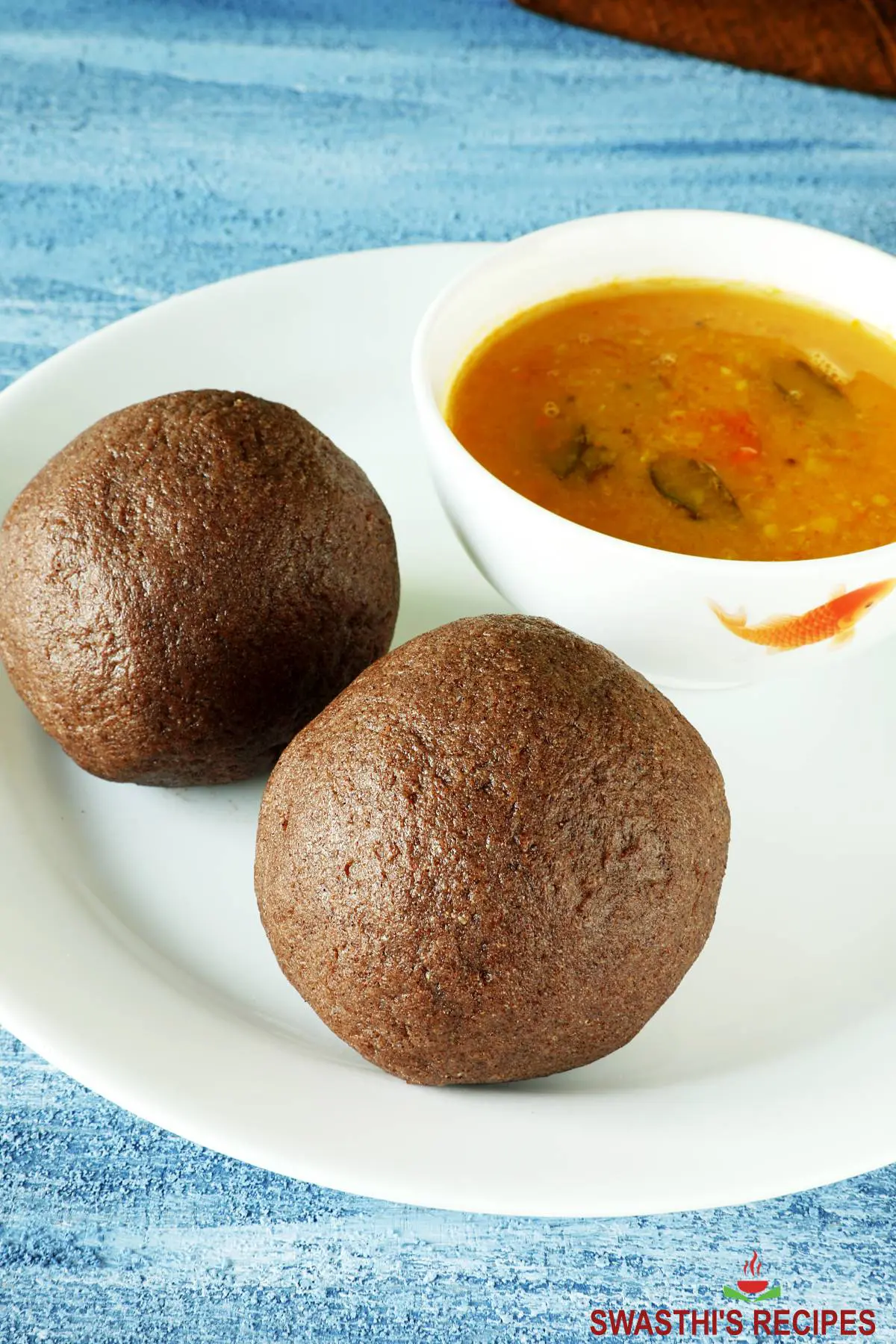
What is Ragi Mudde
Ragi Mudde are gluten-free traditional balls made with finger millet flour. Finger millet is known as ragi in South India, and mudde is a Kannada word for soft ball. Ragi mudde are nutritious, healthy and a wholesome every day food of a large rural population in Karnataka.
Ragi was well known as the poor man’s grain from decades as they are easy to grow with minimal water resources and zero pesticides.
Consuming finger millet regularly strengthens the bones and also helps to maintain steady iron levels. It is great for the overall well-being so these grains are used to make various dishes like rotti, dosa, ladoos and halwa.
Traditionally to make ragi mudde, whole grain finger millet is milled to flour and then slow cooked to a dough like texture. It is then steam cooked for some time and rolled to moist & soft balls.
These can also be made with store bought flour. Making these ragi mudde just takes about 20 to 25 minutes but it has to be prepared correctly to avoid indigestion.
Since it is a whole grain food with lots of fiber, it digests slowly, releases the sugars slowly & keeps you full the whole day. So it is good for everyone including toddlers & people with diabetes.
Ragi mudde is served with some gravy/ soupy sides like bassaru, massoppu, saaru or any dal varieties. Farmers who would leave home in the early hours of the day would eat this with a nutritious lentil dish that helped them to keep fit the whole day.
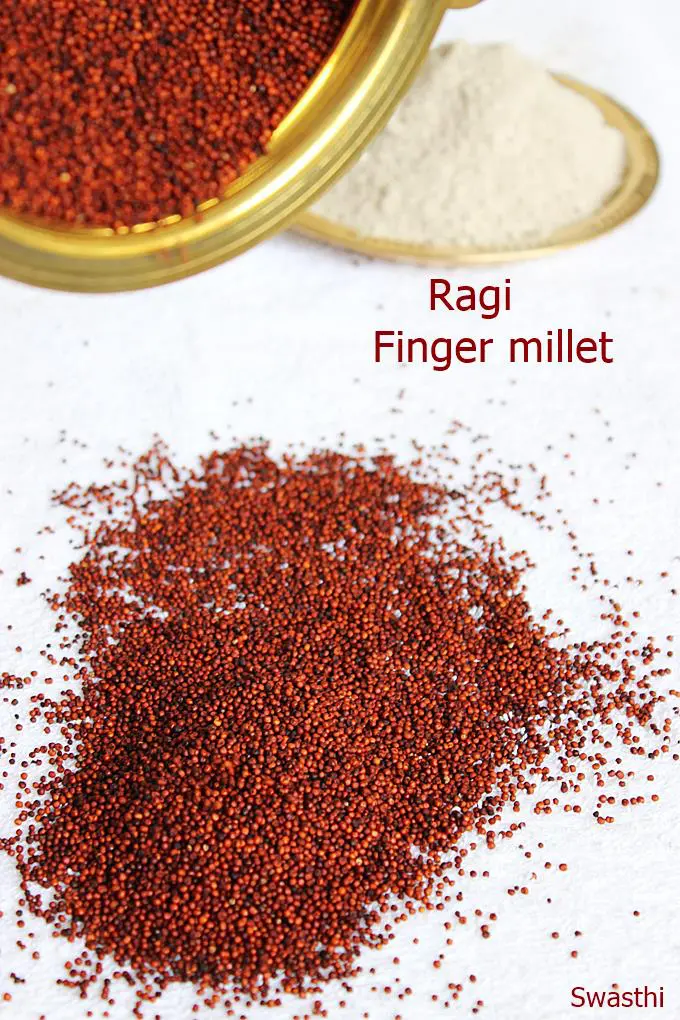
About This Recipe
My recipe will teach you how to make soft and well-cooked ragi mudde. For years I have made this with homemade sprouted ragi flour which I would get from my mom’s home in India. With the current situation I have no access to it so have been using store bought one with good success.
So any kind of ragi flour will just work as good, sprouted or non-sprouted both. If you are a first timer start with smaller quantities till you get used to the taste and texture.
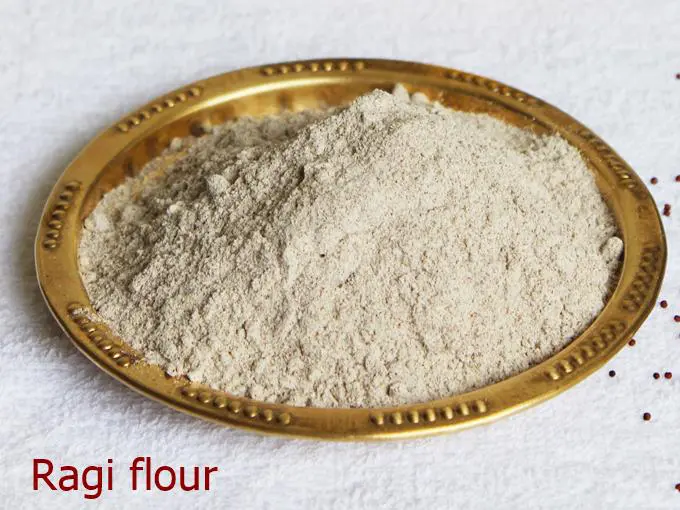
To serve this you will need a lot of side dish. I would say for 1 serving of ragi mudde you will need atleast 2 cups of side dish. So plan accordingly.
These balls are a powerhouse of nutrition loaded with essential vitamins, minerals & fiber. So it is best to have this in the early hours of the day like for breakfast or lunch. Having these for dinner or late in the night can cause tummy problems.
Apart from ragi flour, you will need a sturdy wooden stick or spatula especially if you are making this in larger quantity. In India, we use a wooden stick called mudde kolu to make this.
However a regular wooden spatula just works well for smaller quantity. It can break if you use it for larger quantity, like more than 1 cup.
You can easily find many kinds of mudde kolu in Bangalore & Mysore regions. A regular straight wooden rolling pin also works well.
Ragi Mudde vs Ragi Sankati
Mudde is a Karnataka dish and is made only with ragi flour and water. But ragi sankati is a dish from Andhra Pradesh which is made with rice, ragi flour and water.
Though these are made in a similar way they taste quite different. Sankati is lighter & easier to digest due to the addition of rice.
Vegetarians serve them with a good gravy including leafy greens. Non-vegetarians eat them with chicken curry, chicken pulusu or chicken sambar.
For more Ragi recipes, you can check
Eggless ragi cookies
Ragi roti
Easy ragi dosa
Ragi ladoo
Easy Ragi idli
Ragi halwa
Method 1
How to Make Ragi Mudde (Stepwise Photos)
1. Add 1 tablespoon ragi flour to a small bowl. Pour 3 tbsps of water and give a good mix to break up the lumps.
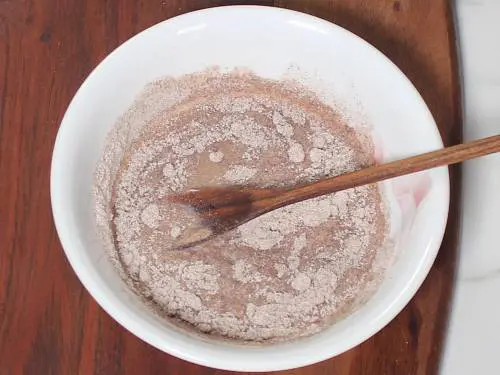
2. We want a smooth mixture here. Set this aside.
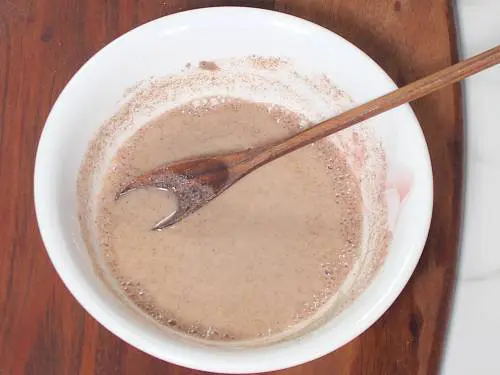
3. Pour 2 cups water to a heavy bottom pot. Add half teaspoon salt (optional) and 1 teaspoon ghee (optional). Traditionally salt and ghee are not used. Bring this to a rolling boil.
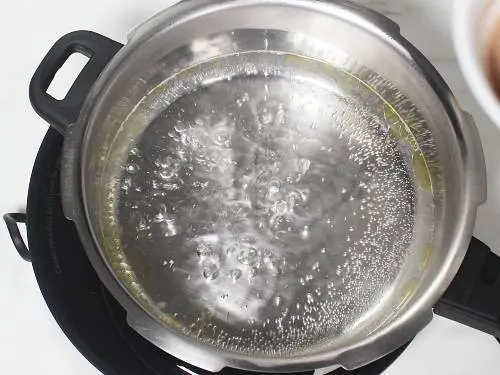
4. Stir the flour mixture with a spoon and pour to the boiling water.
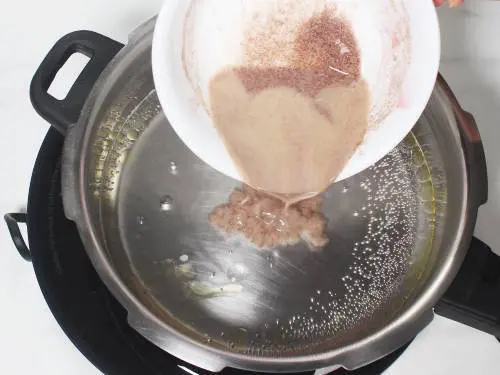
5. Give a good stir so it incorporates into the water well.
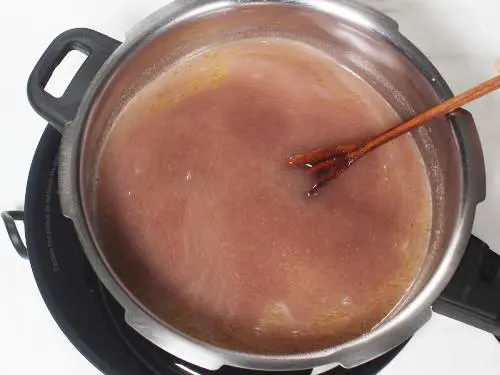
6. Then cook this mixture on a medium heat until it begins to boil & bubble well.
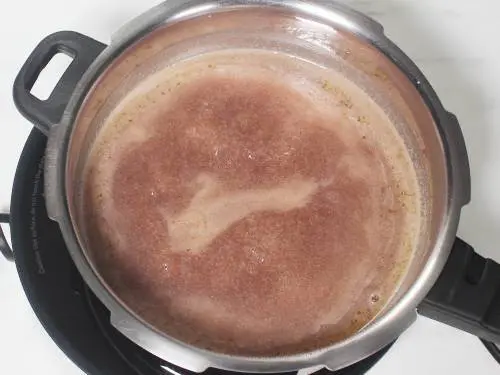
7. Reduce the flame to lowest and add the flour.
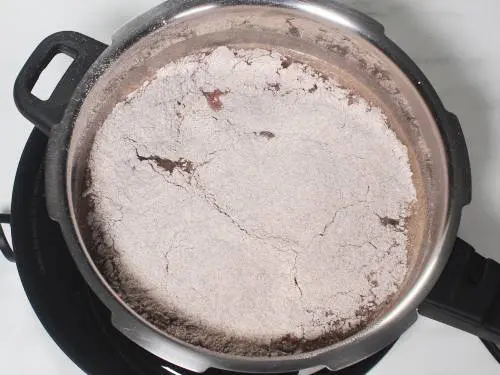
8. Using a stick or a wooden spatula incorporate the flour into the water.
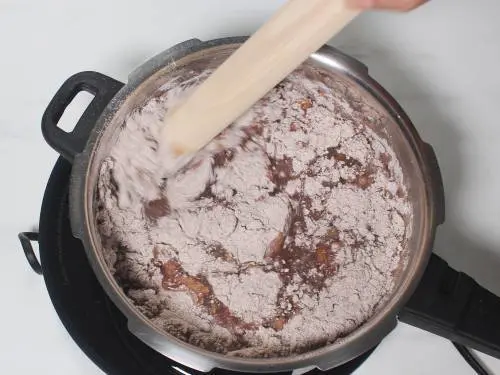
9. While mixing you will see specks of flour and loose lumps. Keep mixing to incorporate all the flour.
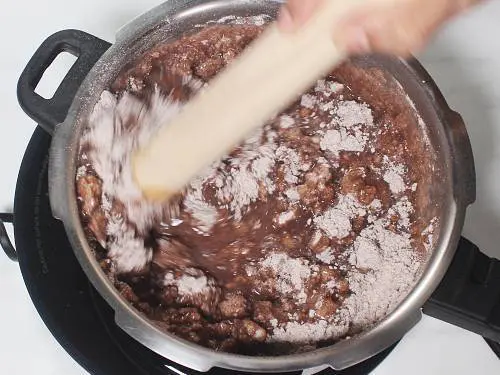
10. You won’t get any lumps here. Take a spoon and cleanup the spatula or stick.
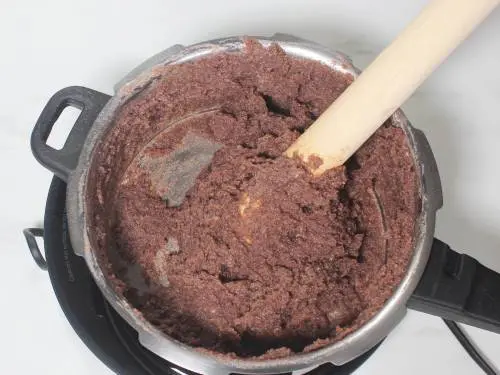
Steaming
Cover the pot and let it steam for about 5 minutes. Remember to keep the flame at the lowest. I turn off the heat and it rest for another 5 minutes. This is when the dough cooks well.
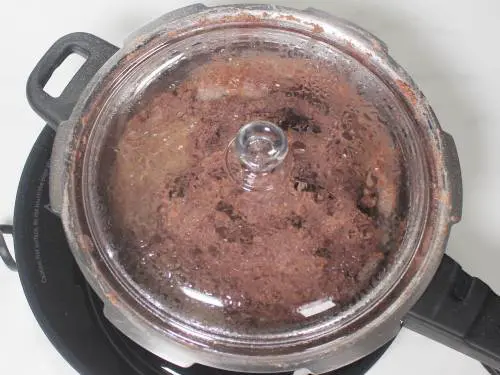
After this step you will see some of the dough is stuck to the bottom. This is how it turns out traditionally. However if you do not want to waste the dough use a nonstick pot or pan.
To check if it is done, touch the dough with your fingers or spoon. The dough will be dry and won’t stick if it is done perfectly. Also you will see the dough begins to dry out or slightly brown at the bottom. This is a sign that ragi mudde has cooked well.
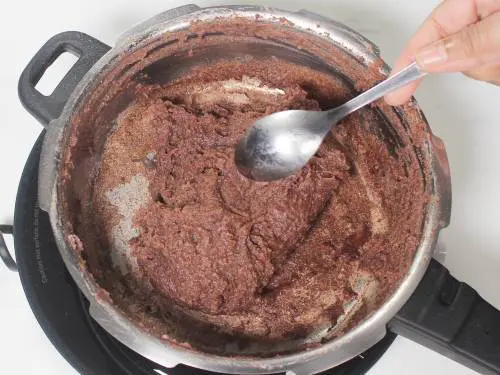
Grease or moisten a wide plate and transfer the steamed dough. Dip your fingers in a bowl of water or grease your fingers. Knead slightly hot dough well for 1 to 2 minutes so it looks uniform and smooth.
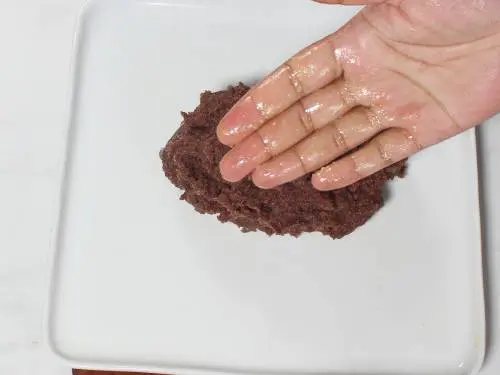
Divide the dough to 3 portions and smoothen them to balls. You can also make smaller balls if you prefer. This recipe makes 3 medium or 2 large servings.
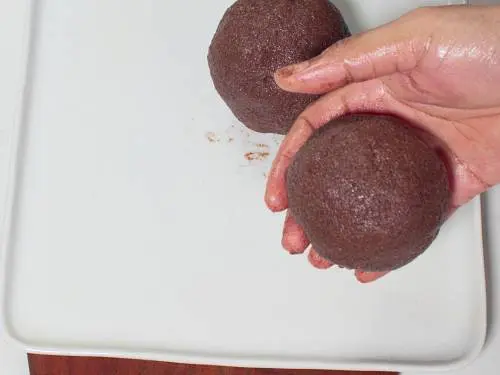
Serve ragi mudde hot with any curry/ gravy/ sambar. It keeps good in a insulated box for 2 to 3 hours. I usually place a small steel rack or trivet in the box and then place these over it so they don’t sweat and become wet.
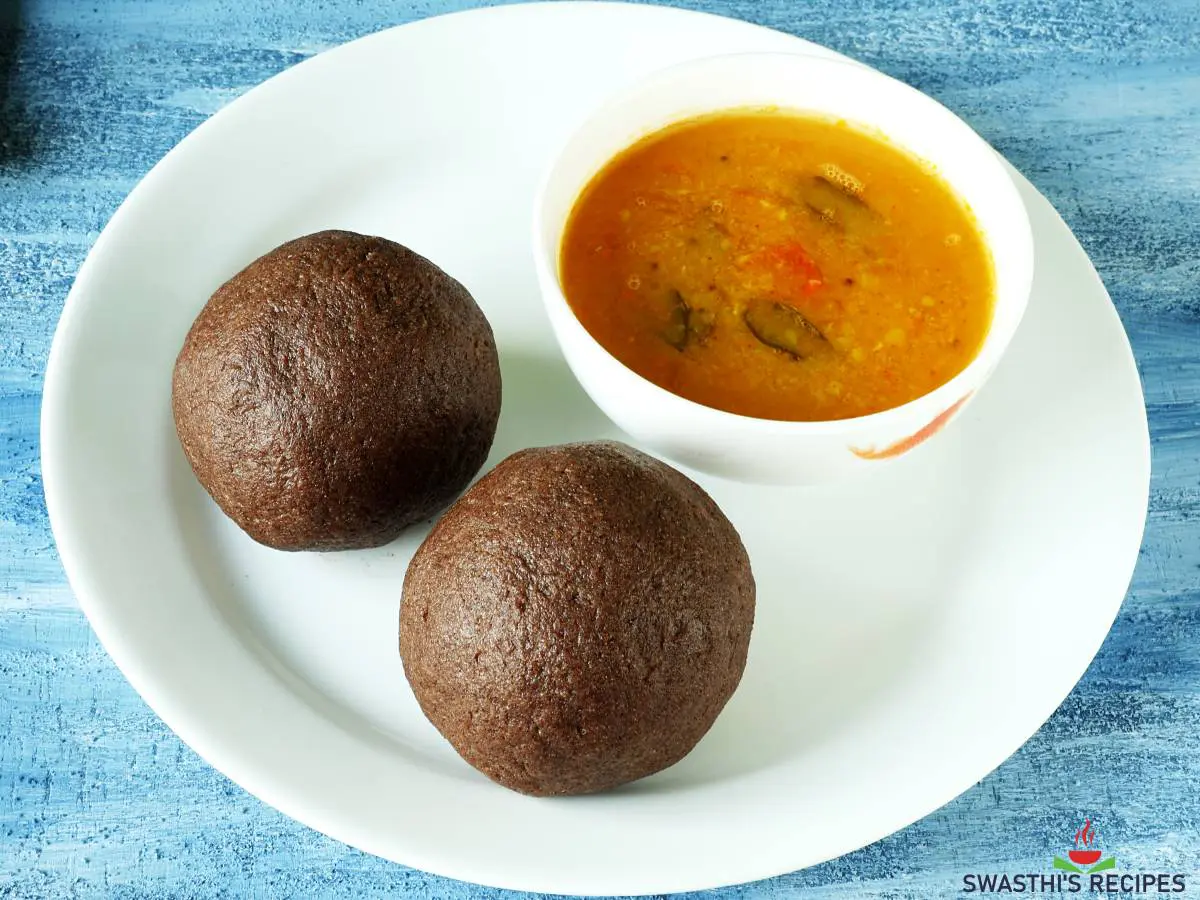
Troubleshooting Tips
- If your mudde becomes too soft, sticky, too wet and looks soggy at the last stage, add a tablespoon or more ragi flour. The amount of water to use depends on the kind of flour so this extra tablespoon may or may not be needed.
- Traditionally ragi mudde is made with regular ragi flour. But sprouted flour works as good and is lighter to digest.
- Mine always turns out lighter in color and softer if ragi is sprouted too much. My mom would always sprout them to half inch long. So if you are using homemade sprouted flour (with longer sprouts) then use lesser water. Below is a picture of the same.
Method 2 – Ragi mudde
1. We will need ½ cup flour for this recipe. Stir in 1 tbsp ragi flour in 1 cup water. Also add little salt to taste and bring the water to a boil. Allow the mixture to boil rapidly.
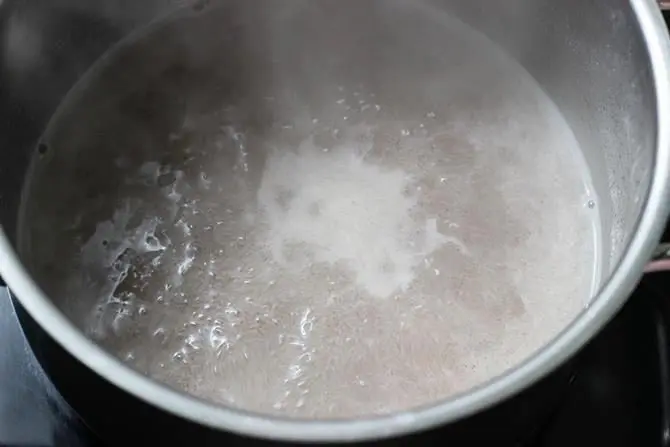
2. Add the rest of the flour in 2 parts. If you are making more ragi mudde then add it in 3 to 4 parts.
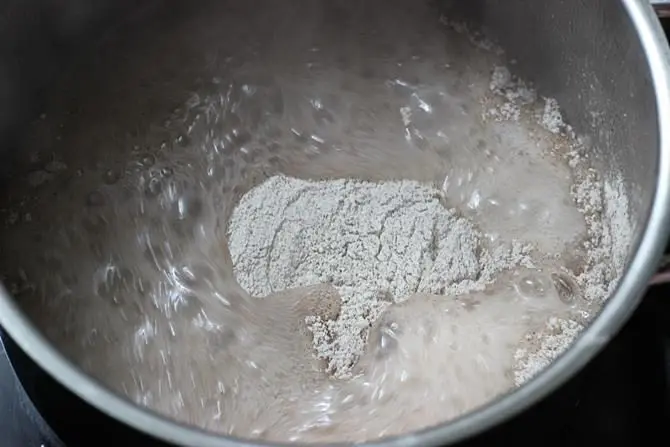
3. Set the pot aside, away from the stove and stir well with the wooden stick or spoon to prevent any lumps. Put it back to the stove and cook till it thickens. Scrape off the sides and get the dough to the center of the pot.
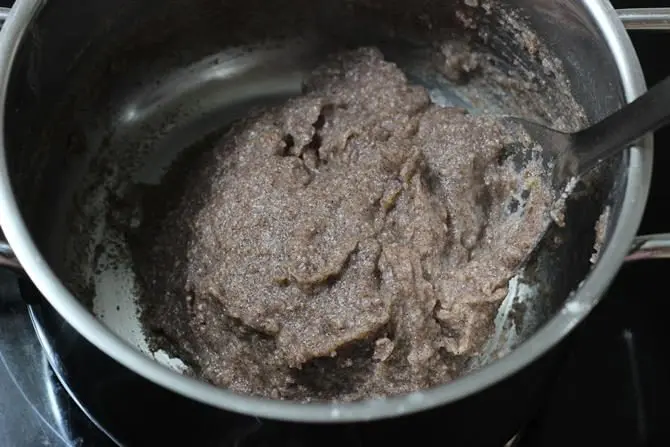
4. Cover and cook on a lowest flame for about 2 to 3 minutes, making sure you are not burning it.
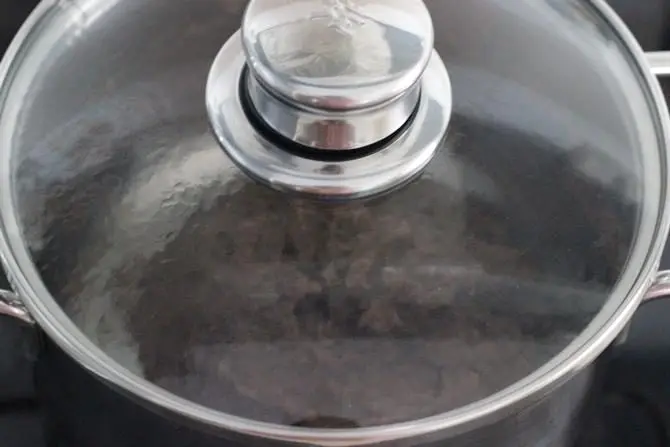
5. Off the stove and let the dough rest for few minutes. Keep the pot covered since it still gets cooked. When the temperature comes down, either grease or moisten your palms and roll it to balls. Serve ragi mudde with your favorite gravy or sambar.
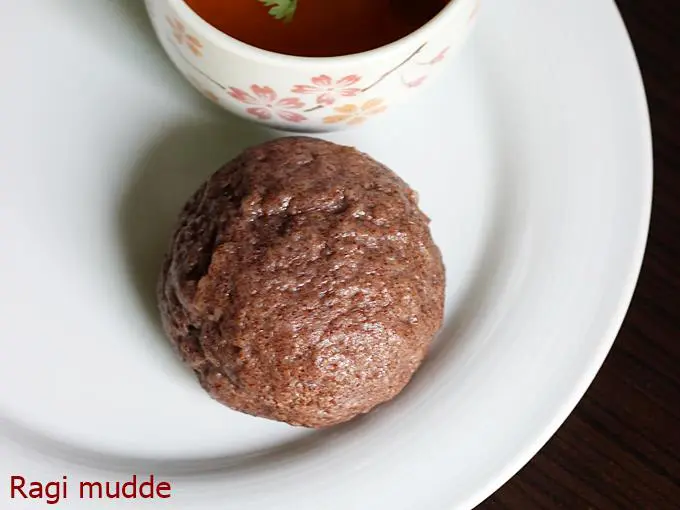
Related Recipes
Recipe Card
Ragi mudde recipe first published in November 2014. Updated in July 2023.
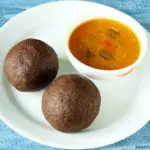
Ragi Mudde Recipe
For best results follow the step-by-step photos above the recipe card
Ingredients (US cup = 240ml )
- 1 cup ragi flour (finger millet flour)
- 2 cups water
- ⅓ teaspoon salt (optional, adjust to taste)
- 1½ teaspoon ghee (or use water)
for slurry
- 1 tablespoon ragi flour
- 3 tablespoons water
Instructions
Method 1
- In a small bowl, mix together 1 tablespoons ragi flour with 3 tablespoons water. The mixture should be free of lumps. Set this aside.
- To a heavy bottom pot, pour 2 cups water. Add ⅓ teaspoon salt and ½ teaspoon ghee. Both these are optional.
- Bring the water to a boil, then stir the ragi mixture with a spoon and pour it straight into the boiling water.
- Give a good mix with the spoon and let it come to a boil again on a medium heat.
- You will see the mixture begins to thicken and bubble, then lower the flame completely and add the flour.
- Mix with a sturdy wooden stick or a spatula to incorporate the flour into the water. Within 60 to 90 seconds you should see no streaks of flour.
- Continue to mix until no lumps remain. Scrape off the stick with a spoon to loosen all of the ragi stuck to it.
- Cover the pot and let it cook on the lowest heat for 5 mins.
- After 5 minutes, give a mix again for 30 to 60 seconds. Remove the stick and cover back. Turn off and let it steam in the residual heat for another 5 minutes. (with the stove turned off)
- Perfectly done ragi mudde will be non-sticky when you touch it with your fingers or a spoon.
- Grease or moisten a wide plate with few little water. This helps the dough not to stick to the plate.
- Transfer the dough to the plate. Grease your fingers with ghee or dip your fingers in a bowl of water.
- Begin to knead the dough for 30 to 60 seconds. Then divide to 2 to 3 equal portions and roll to small balls.
- Serve ragi mudde hot with a gravy or soupy lentil dish.
Method 2 – old method
- We will need ½ cup flour for this recipe. Stir in 1 tbsp ragi flour in 1 cup water. Also add little salt to taste and bring the water to a rolling boil.
- Add the rest of the flour in 2 parts. If you are making more ragi mudde then add it in 3 to 4parts.
- Take the pot away from the stove and place on the kitchen counter. Stir well with the wooden stick or spoon to prevent any lumps. Put it back to the stove and cook until it turns thick. Scrape off the sides and get the dough to the center of the pot.
- Cover and cook on a lowest heat for about 2 to 3 minutes, making sure it does not burn.
- Turn off the stove and let the dough rest for few minutes. Keep the pot covered at the steam helps to cook it fully.
- When the temperature comes down, either grease your hand with ghee or moisten with water and roll it to balls.
- Serve ragi mudde hot with any gravy or sambar.
Notes
- We usually make this without any salt as the side dishes are already salted.
- Traditionally no ghee or oil is used. Instead fingers are dipped in water before rolling to balls.
- If you do not have a wooden stick use a steel spoon.
Alternative quantities provided in the recipe card are for 1x only, original recipe.
For best results follow my detailed step-by-step photo instructions and tips above the recipe card.
Video
NUTRITION INFO (estimation only)
© Swasthi’s Recipes

About Swasthi
I’m Swasthi Shreekanth, the recipe developer, food photographer & food writer behind Swasthi’s Recipes. My aim is to help you cook great Indian food with my time-tested recipes. After 2 decades of experience in practical Indian cooking I started this blog to help people cook better & more often at home. Whether you are a novice or an experienced cook I am sure Swasthi’s Recipes will assist you to enhance your cooking skills. More about me
Follow Swasthi’s Recipes

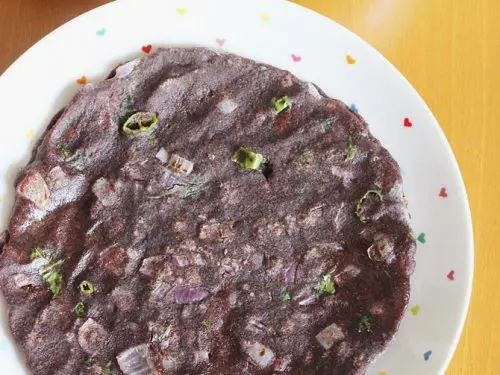
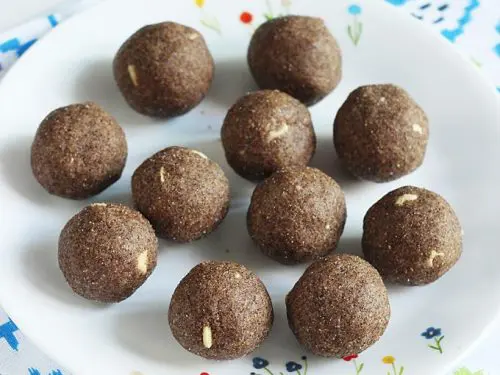
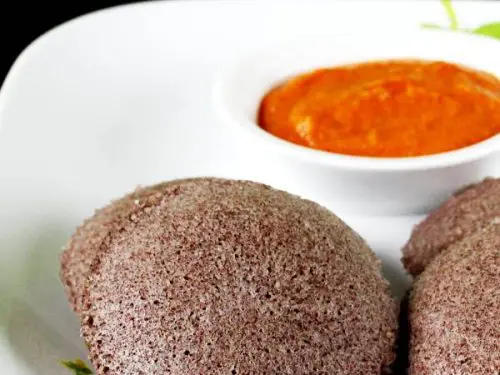
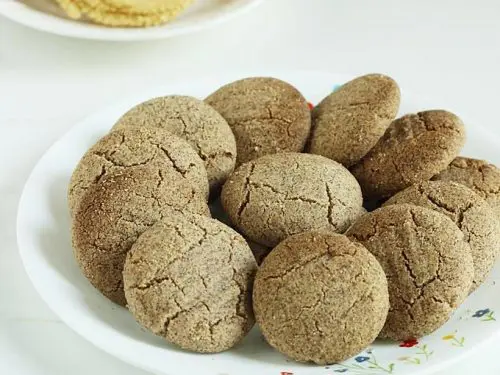
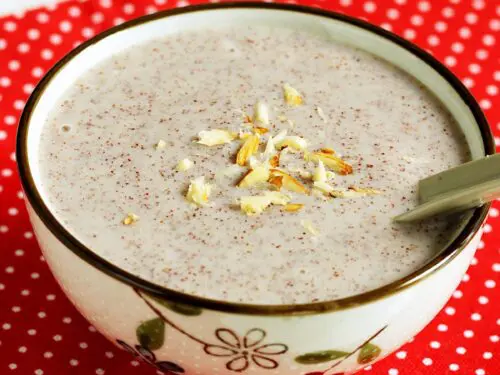
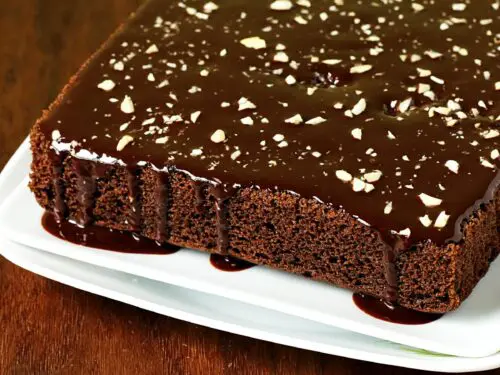
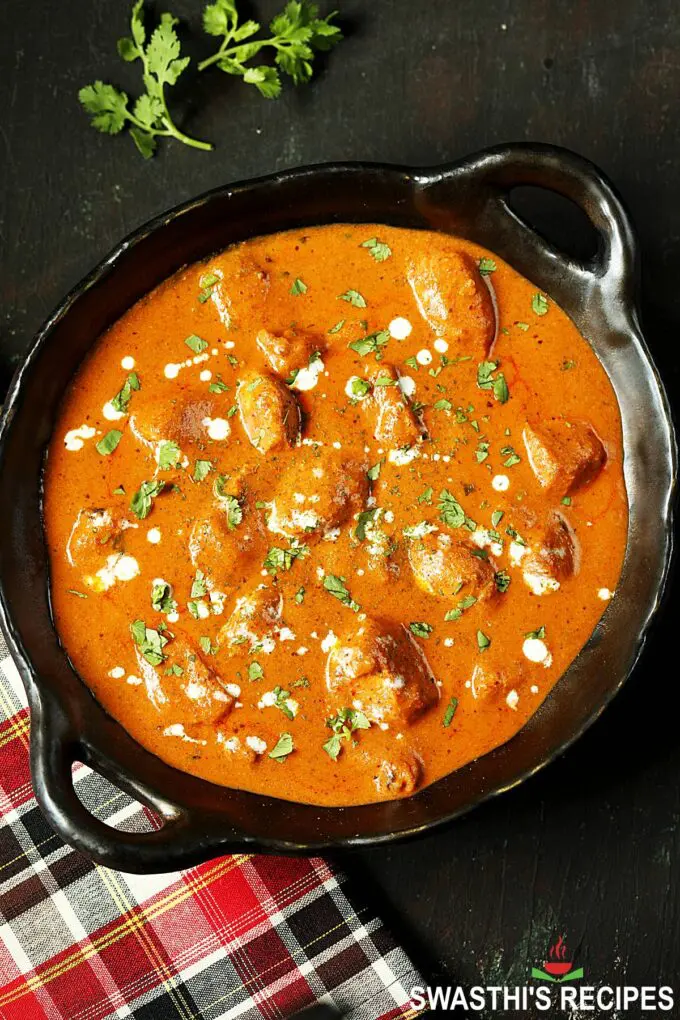
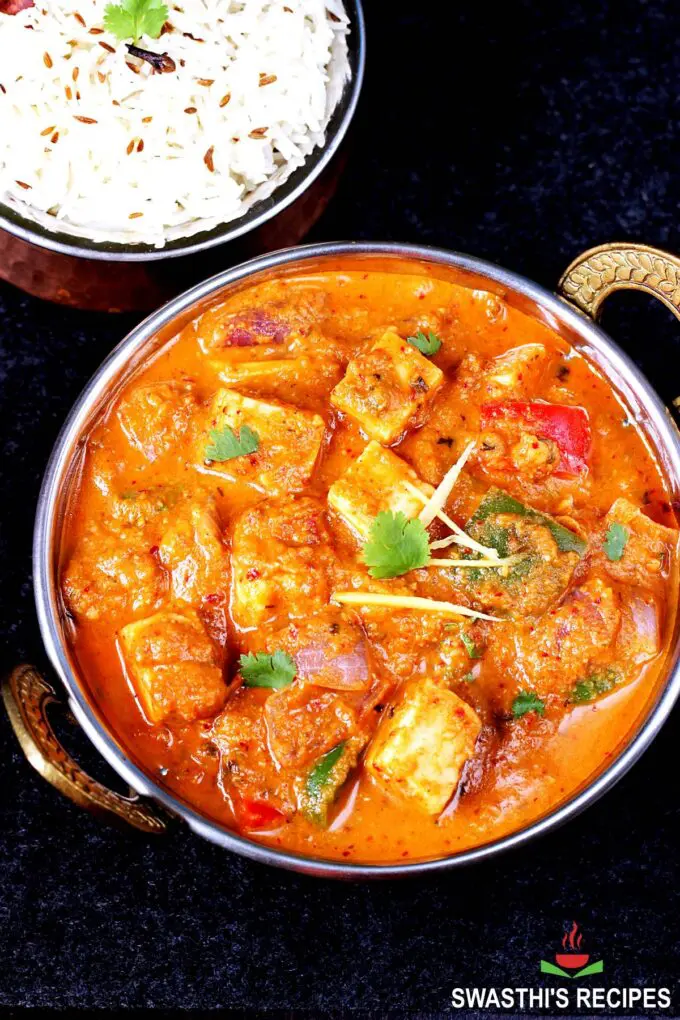
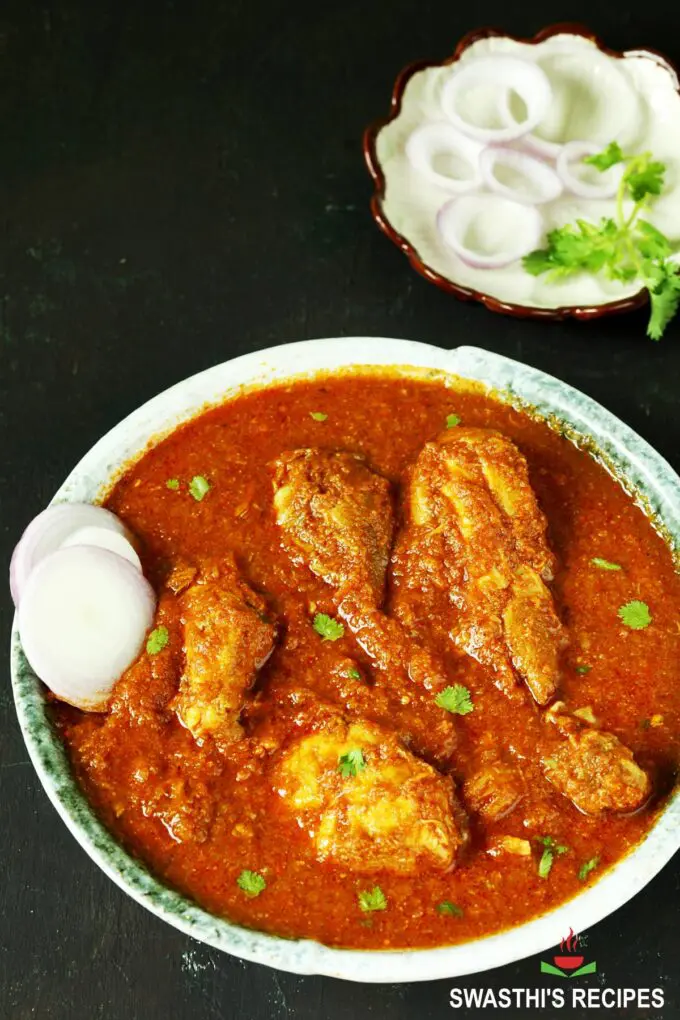
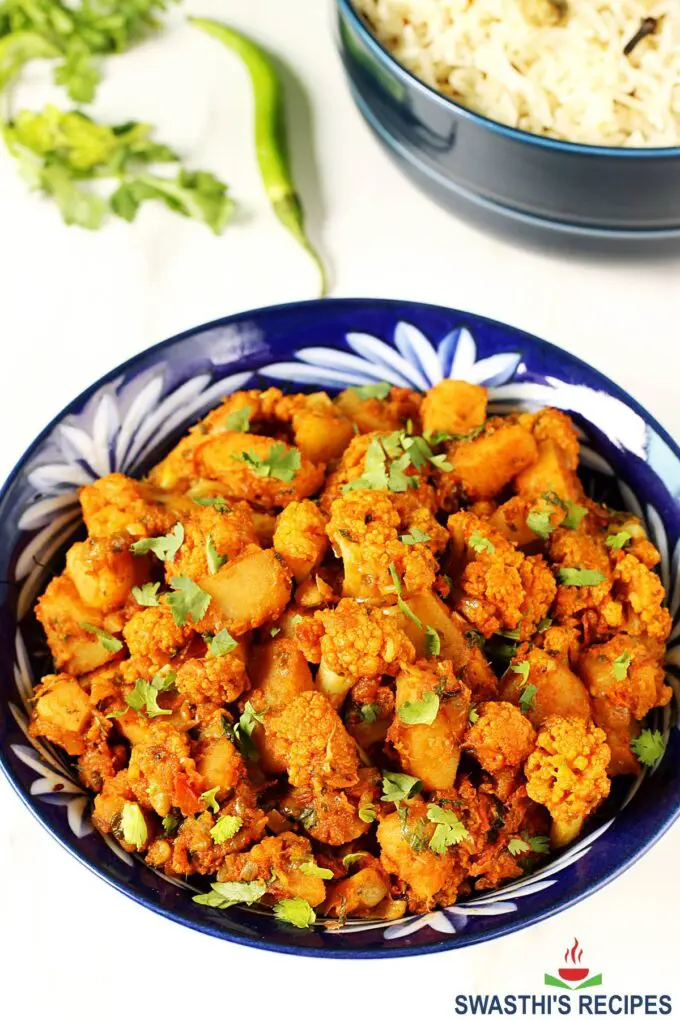
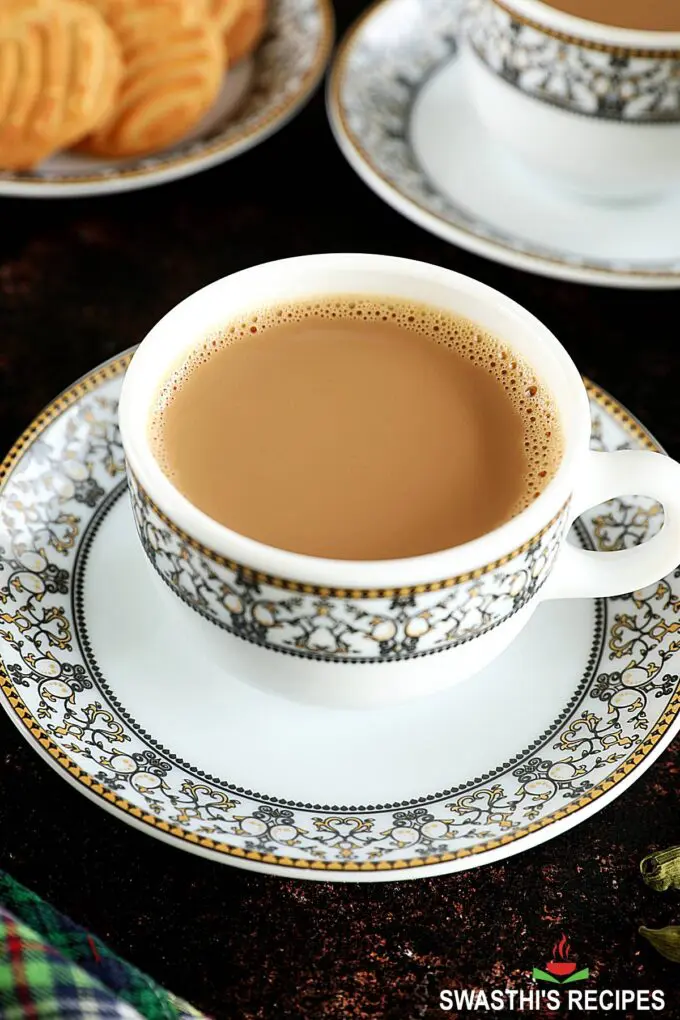
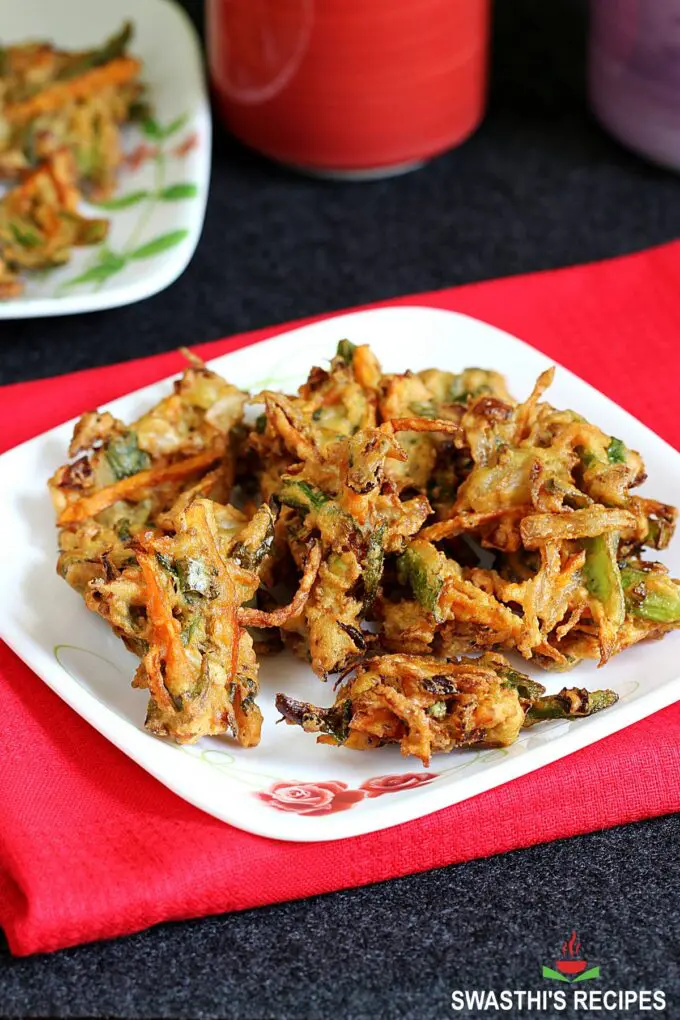
Comments
I love this recipe and have made many times using your recipe 2. It turns out so soft and good. Can you tell me how much rice to use like in ragi sankati?
Excellent my mouth is watering I am waiting to eat
Tried it for the first time and it came out well.
Thank you.
Glad to know Nanditha. Thank you
I normally go to your websites, tried many recipes
Thank you Anasuya
Best Recipe for ragi mudde. Loved it!
I love how this mudde turns out. I tried this from many YouTube videos and this recipe gave me the best results. We are a family of 6 and making a good mudde was very hard for me until I bought a sturdy stick like yours. Thank you. Keep inspiring us.
Prathima, Thank you so much for sharing! Yes a good stick makes a difference.
🙂
Hi Swasti, your recipes are amazing, if I need to try something new then I’m dam sure to check if you have posted something that I’m looking for and I would just go for it……
I love the way you post pics step by step
As always this mudde was so soft without any lumps…yum yum
Gudoos to your amazing dedication…keep going ????
Hi Vivian,
Thank you so much! Happy to know your mudde turned out good. Thanks again
One either likes the pure taste of grains or not. I surely do and these muddes are often on my menue! Thank you for the recipe ?
Although before I have made the mudde mixing all the ragi flour with some water and then adding the mixture into boiling remaining water. The result have been also nice and non sticky when proportions right. It feels easier as this way there is no lumps to be mixed/beated out.
Is there a specific reason why dry flour is added to water?
I love them no matter which way they are done and they go so well together with spinach sambar ?
Once again, thank you ☺️?
Hello Helis,
That’s awesome! Having this often is great for the overall health. Yes just like you mentioned, we make it that way for the aged. The texture and taste of that is completely different but it is more smoother and more moist. It is easier to swallow.
The difference in the taste and texture is like boiled potatoes (that have been immersed in water) vs steamed potatoes. If you taste both one after the other you will know that.
Glad you enjoy it.
🙂
Great, thanks for the feedback! True, having them one after the other would give better idea of the difference ??
Hi Swasthi, I’ve been following your recipes for long now. I made Ragi mudde following your method from 2014. It was very easy when compared to the updated method. Can you please share that as well. I’m 67 yrs old and I find you posted one of the best methods I have seen so far.
Hello Sir,
Thank you so much! I have put back that recipe as well as method 2 in the stepwise pictures (just above the recipe card) and also in the recipe card. Hope this helps
Thank you very much for your updates.
Like your detailed recipe on raagi mudde
How long you can keep ragi mudde after making it?
It is best consumed hot. You can keep it for 2 to 3 hours in a insulated hot box.
Hey,
I am really interested in trying this recipe, which dal or curry dish goes best with it ?
Thanks in advance!
Hi Rajshi
Try with this Sambar or this tiffin sambar. It goes well with any dal or leafy greens with dal but if you are new to it, then I insist you try with a good sambar. Hope you enjoy it.
Thank you!!
I will give it a try
Hi Ms.Swasthi, tried both ragi ladoos and ragi biscuits. Both were excellent. Thanks for sharing.
Hello!
You are welcome! Glad you liked them. Thank you!
Excellent!
I am a beginner,
I did not know..the steps
I thought it was simpler than as described here.
Thanks!
You are welcome!
Thank you Ms. Swasthi. I always wanted to eat this healthy dish and your receipe was a timely help. ☺
Hello Anoosha,
You are welcome. Glad you liked it!
Thanks for the comment.
Awesome recepies, helps me so much
Thank you!
Great foolproof recipe, thanks.
You are welcome!
It wasn’t hard as ball but it was soft and tasty. My husband loved it
Hi Swathi,
Hope you were able to make a ball. The texture hard or soft comes from the ratio of water to flour. The amount of water depends on the kind of flour. Some take up so much water hence the mudde comes more firm some don’t. So experienced cooks keep adding the flour approximately until it comes to a texture they think is right. This is similar to the way many people make upma. Keep adding rava to boiling water until you get a certain consistency. So for firmer balls, next time use the same recipe & try adding a bit more of flour. Hope this helps.
That is not ragi mudde plz correct it as ragi mudha
Ragi mudde is in kannada and ragi mudha is in telugu. There is nothing to correct!
Correct
Nice and healthy recipe.thank you.What is the difference between ragi mudde and ragi sankati?Please post the recipe for ragi sankati and accompanying chicken dishes.Also I request you to give a recipe on how to cook morninga leaves (drumstick leaves).Iam from Bengal but I have interest to learn local dishes as I am residing in Bangalore and southern dishes are so nutritious and tasty.Thanks in advance.
Hi Kanchita,
You are welcome. Ragi mudde is made with just ragi flour. But ragi sankati is made with rice and ragi flour. You can cook rice with 1:4 water until soft. Mash it slightly to mushy texture and then add the ragi flour in parts. Mix and incorporate the flour to make sure there are no lumps. Cook covered on a very low flame until the entire mixture turns to very thick mass. I usually stir fry moringa leaves with aloo or sweet potato just like the way we make aloo methi. You can also add it to dal. We make the sukhi dal with these leaves as they taste less bitter here. I also add some leaves along with mashed aloo or sweet potato to atta and make the paratha (not stuffed) Hop this helps.
Awesome . It’s a big hit for the first time and we enjoyed very much. Thankyou so much for the recipe Swathi.
Welcome Ratna. Happy to know the ragi mudde turned out good. Thank you
Thanks a lot swathi… it exactly how u have shown in ur pic…
Welcome Bindu